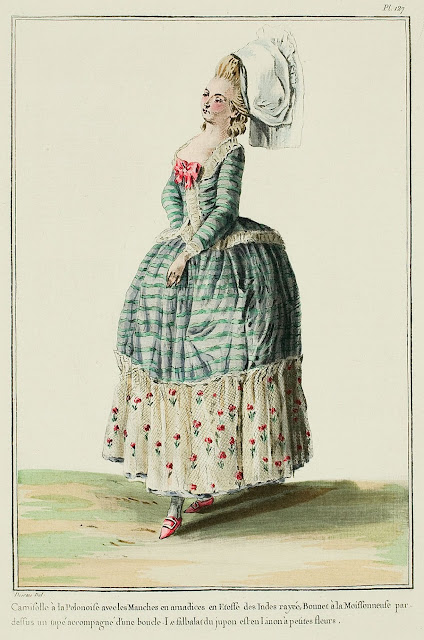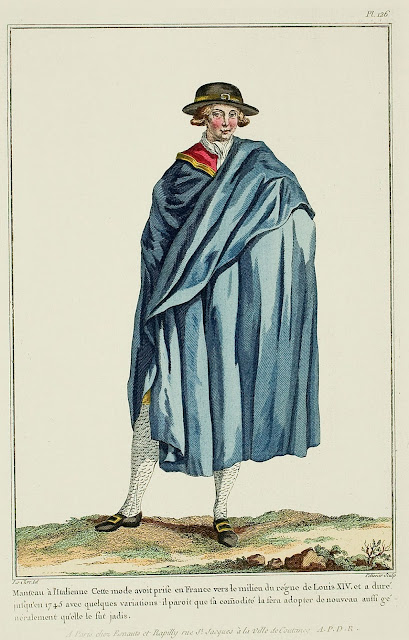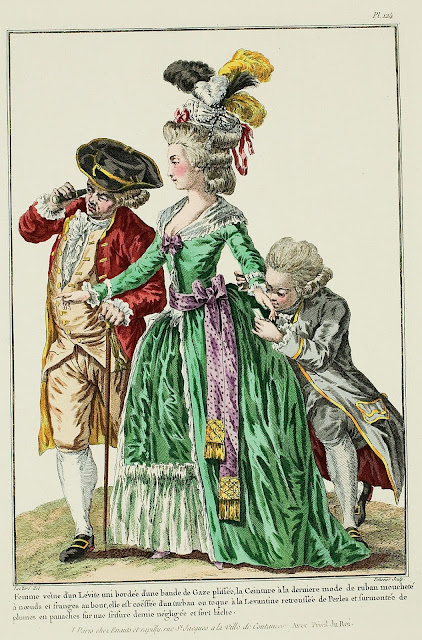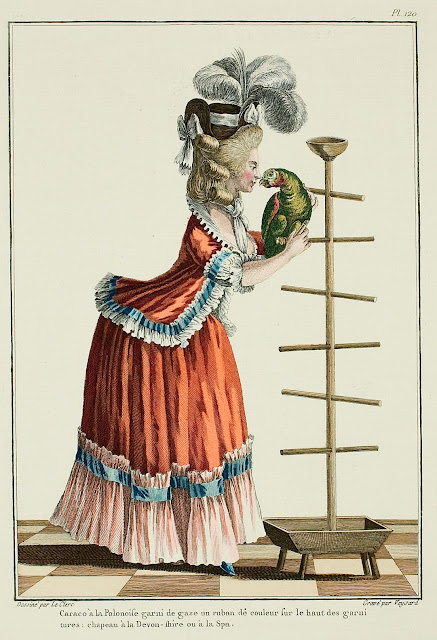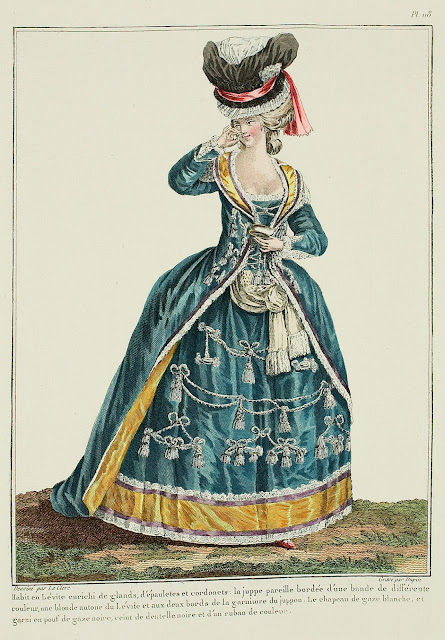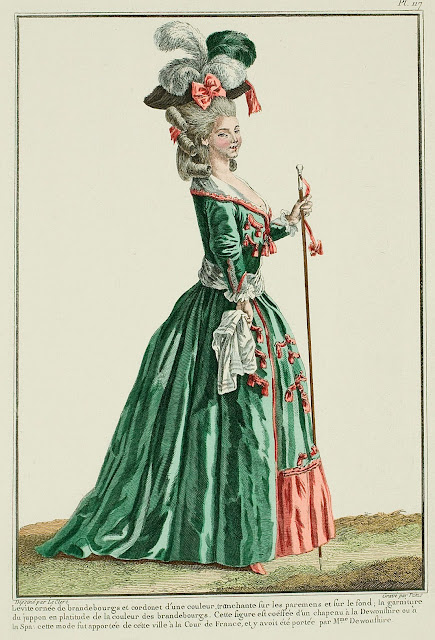Galerie des Modes, 29e Cahier, 5e Figure

This man is dressed in a winter suit of holland Rateen, lined with satin, and over it a velvet overcoat. This dress is common among opulent people who have gained a certain age. (1780) WINTER SUIT, or double Suit, in the fashion principally for persons of an advanced age. This dress consists of a full Suit, of frised rateen, lined with a contrasting color, trimmed with gold buttons, relating to, and over it an ample overcoat of black velvet, lined with black or fire-colored satin; gold buttons to the waist. Full wig à la financiere . We believe that we observe that this type of wig, and wigs in general, are beginning to pass from fashion. All commit to believing that they will soon become the distinctive costume of certain professions. However, certain people are still seen wearing full wigs with the épée, but their number decreases each day, and already this costume begins to be ridiculed.
